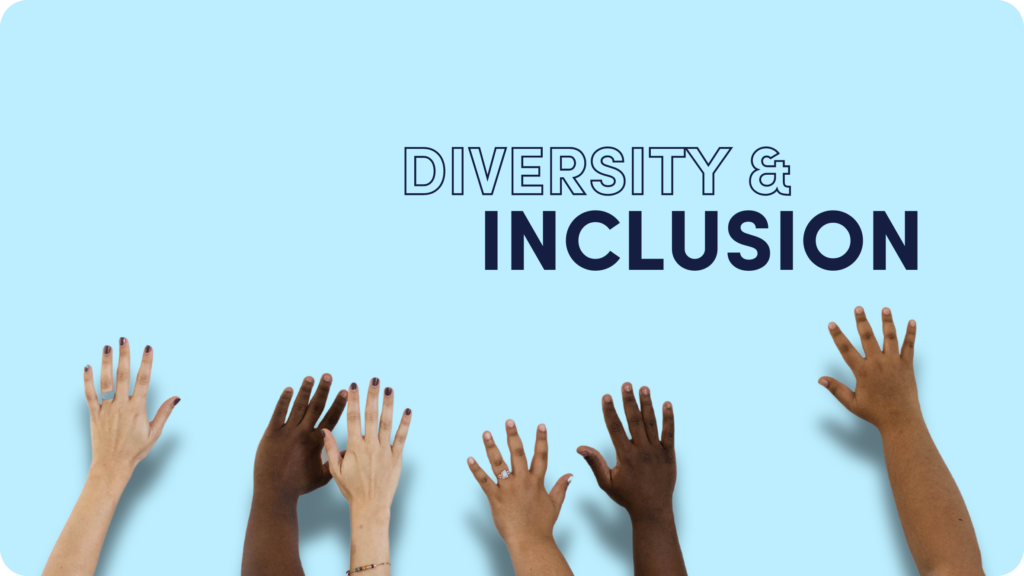Embracing Diversity and Inclusion: The Power of Recognizing Infinite Differences

While race, age, religion, disability, gender, and sexuality are often the focal points in discussions about diversity, these are just the beginning. At Outbrain we acknowledge that our differences extend far beyond these markers, touching every aspect of who we are – our sense of humor, music preferences, favorite sports, introversion or extroversion, and unique working styles. These differences shape our identities and influence how we navigate the world, both personally and professionally. No two people share the same life experiences, which makes each of us truly unique.
The ‘Headwinds’ and ‘Tailwinds’ of Life
Imagine a scenario where the team manager is a passionate golf player. Naturally, this manager surrounds himself with fellow golf enthusiasts, fostering a tight-knit group within the organization. However, colleagues who don’t share this passion may find themselves at a disadvantage, with less access to the manager and, consequently, less influence within the team. This scenario illustrates how something as seemingly trivial as not being a golf player can create an imbalance in the workplace.
Yet, as impactful as this disadvantage may seem, it pales in comparison to the challenges faced by those born into less privileged circumstances – such as being born Black, a woman, or into poverty. These circumstances create what we can think of as “headwinds” – forces that hold us back, rooted in aspects of our identity that we cannot choose or change. Conversely, “tailwinds” are the advantages that propel us forward, often unnoticed, simply because of the circumstances of our birth.
At Outbrain we believe our judgment is good but it could always be better. Therefore, recognizing that difference is infinite, we gain a deeper appreciation for the nuances of diversity and we become conscious of aspects we can think of to improve our judgment. We begin to understand why each of us, at one time or another, might feel left out. This understanding encourages us to see ourselves and others as unique individuals, shaped by a complex interplay of headwinds and tailwinds. And when we acknowledge that not all differences are equal, we become more aware of our own advantages and more empathetic towards those who have had fewer.
Building an Inclusive Workplace: A Shared Responsibility
Creating an inclusive workplace is not about casting anyone as the villain or the hero. Rather, it’s about recognizing that we all play a role in this ongoing effort. Each of us has the responsibility to ensure that our workplaces are places where everyone feels valued and included. This starts with a simple yet powerful shift in perspective—acknowledging that we all have blind spots and that, often without realizing it, we may be contributing to the exclusion of others.
Consider this: 61% of employees report that they have to “bend themselves out of shape” to fit in at work. For Black men and women, this figure rises to 79%. Even among white, heterosexual men – the most widely represented group in many workplaces – 45% say they have to hide or downplay some aspect of their identity to conform. This pervasive sense of exclusion is not just a minor inconvenience; it has real consequences. Exclusion hurts. In fact, it activates the same part of the brain as physical pain, leading to stress, sleep loss, and even illness.
Exclusion can manifest in subtle, often unintentional ways. It can be seen in whom we choose to involve in our work and whom we leave out, in the planning of out-of-work activities without considering others’ circumstances, in the moments when we check our phones during meetings, or in the assumptions we make about someone’s interests or values. These small actions can collectively contribute to a culture where not everyone feels they belong.
Using Our Tailwinds to Lift Others
As we move forward in this journey, at Outbrain we are committed to using our tailwinds – the advantages we’ve been given – not just for our own benefit, but to help those around us who may be facing stronger headwinds. After all, by working together to create a more inclusive workplace, we not only help one another but also contribute to making the world a better place for everyone.
References:
- Davidai, S., & Gilovich, T. (2016). The headwinds/tailwinds asymmetry: An availability bias in assessments of barriers and blessings. Journal of personality and social psychology, 111(6), 835.
- Hall, W., Schmader, T., Aday, A., & Croft, E. (2019). Decoding the dynamics of social identity threat in the workplace: a within-person analysis of women’s and men’s interactions in STEM. Social Psychological and Personality Science, 10(4), 542-552.
- Emerson, K. T., & Murphy, M. C. (2014). Identity threat at work: How social identity threat and situational cues contribute to racial and ethnic disparities in the workplace. Cultural Diversity and Ethnic Minority Psychology, 20(4), 508.
- Edmondson, A. (1999). Psychological safety and learning behavior in work teams. Administrative Science Quarterly, 44(2), 350-383.
- Mackinnon, S. P., Jordan, C. H., & Wilson, A. E. (2011). Birds of a feather sit together: Physical similarity predicts seating choice. Personality and Social Psychology Bulletin, 37(7), 879-892.
- MindGym (2023). How to Realise the Diversity Dividend. MindGym.
- Perini, I., Gustafsson, P. A., Hamilton, J.P., Kämpe, R., Zetterqvist, M., & Heilig, M. (2018). The salience of self, not social pain, is encoded by dorsal anterior cingulate and insula. Scientific reports, 8(1), 1-9.
- Yoshino, K., & Smith, C. (2014). Fear of being different stifles talent. Harvard Business Review, 92(3), 27-28.


